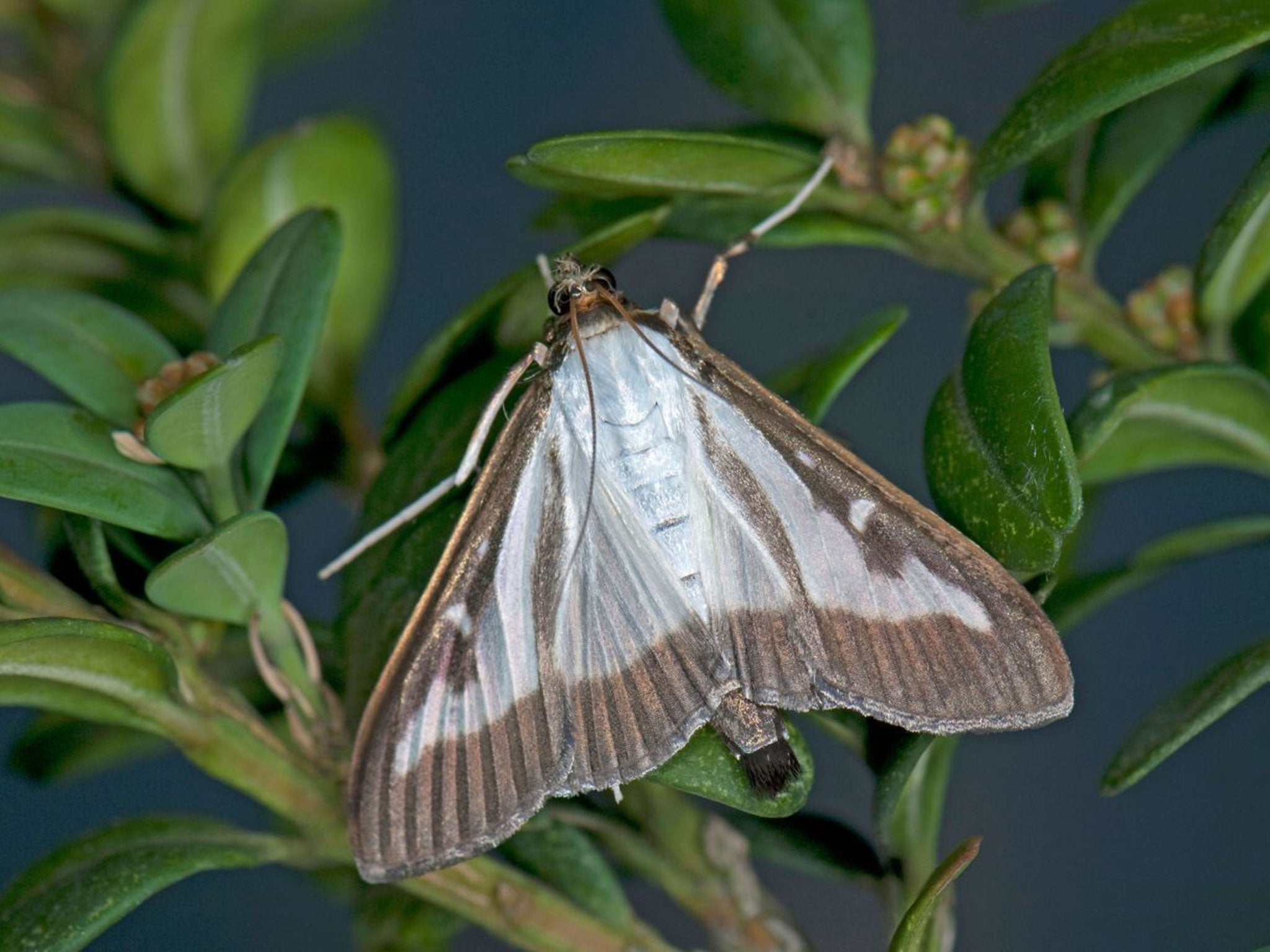Very hungry Asian caterpillar threatens Britain’s box hedges

Not since Alexander Pope ended the 18th-century craze for artfully-trimmed hedges by lampooning aristocrats for turning shrubs into “awkward figures of men” has British topiary faced such a grave threat.
Gardeners are being warned to look out for a new invasive pest which is threatening to lay waste to Britain’s box trees - the favoured shrub of topiary artists - by stripping entire plants bare and reducing painstakingly-clipped creations to withered skeletons.
The Royal Horticultural Society (RHS) has recorded a rapid expansion of cases of Diaphania perspectalis, otherwise known as the box tree caterpillar, a species native to Asia which likes nothing better than to snack on the hitherto famously hardy Buxus sempervirens, which is toxic to other animals, including humans.
The caterpillar, which becomes a moth with semi-transparent white wings, is thought to have first arrived in Europe in 2005 in a consignment of box plants sent from China to Germany. It was reported in Britain five years ago after larvae were spotted in a Surrey nursery and there have been sporadic infestations since.
But now experts fear it may be on the verge of expanding rapidly across the country after the number of cases doubled in the last 12 months and infected plants were spotted in east London and Buckinghamshire.
The RHS documented eight cases of infestation by the voracious caterpillar in a single month in May in the Woodford and Loughton areas of London and the village of Stoke Poges, near Slough. The figures are double the total for the entirety of 2013 and match the number of all sightings since 2011.
Andrew Salisbury, an entomologist with the RHS, told The Independent: “The numbers don’t sound high but they are a marked increase and a sign of establishment of the species.
“There were eight cases over the last three years, and now there are already eight this year, indicating that this pest is now well-established in parts of the South East and likely to become a big problem on box plants.”
The Asian caterpillar is the latest alien fauna to cause potential havoc in British gardens after stealing its way into the country hidden on imported plants.
Non-native invasive species including the rosemary beetle, which originates from southern Europe and damages rosemary and lavender plants, and New Guinea flatworm, which has arrived in Europe and now poses a threat to Britain’s snail population, have all spread on the back of the international plant trade.
The box caterpillar, which is also spreading in the Netherlands and France, is an imminent concern because it can breed two to three generations every season between May to September and adult moths can spread five to 10km a year.
The habit of the adult moth of laying its eggs in the inner branches of the plant and the resulting caterpillars eating their way outwards, wrapping the plant in a sticky web, means that infestations can be difficult to spot before significant and often fatal damage has been done.
Unlike edible plant bugs, the caterpillar can be controlled professionally using pesticides but it nonetheless threatens wild box plants common across the South West as well as the pastime of thousands of amateur topiary growers.
James Crebbin-Bailey, one of Britain’s leading topiarists and twice gold medal winner at the Chelsea Garden Show, said: “It is quite a worry because the first thing you know about it is you have got a defoliated plant. Commercial nurseries should be able to control it but the amateur grower is more at risk.
“It’s alarming because until very recently it was one of the toughest plants around. It is poisonous and extremely hardy. It has been considered to be fairly bullet proof.”
Planted close to houses to deter witches from entering homes according to folklore, the box plant with its small leaves and dense growth has been a feature of the formal English garden since the Tudors caught onto a Continental fashion for shaping plants into “knot” gardens of intertwined shrubs.
By the 17th century the art form had graduated to the elaborate leafy creations for which it is famed. As Horace Walpole would later note: “Gods, animals and other objects were no longer carved out of stone: but the trees, shrubs and hedges were made to do double service as a body of verdure and as a sculpture gallery.”
The satirical intervention of Pope, who ridiculed the nobility’s love of topiary with an article containing mock catalogue descriptions such as “St George in box; his arm scarce long enough, but will be in condition to stick the dragon by next April”, was credited with virtually killing off the craze.
But it soon re-emerged and remains popular. Mr Crebbin-Bailey said: “I haven’t seen this caterpillar. My hope is that it can be controlled so I and others never will.”
Join our commenting forum
Join thought-provoking conversations, follow other Independent readers and see their replies
Comments
Bookmark popover
Removed from bookmarks